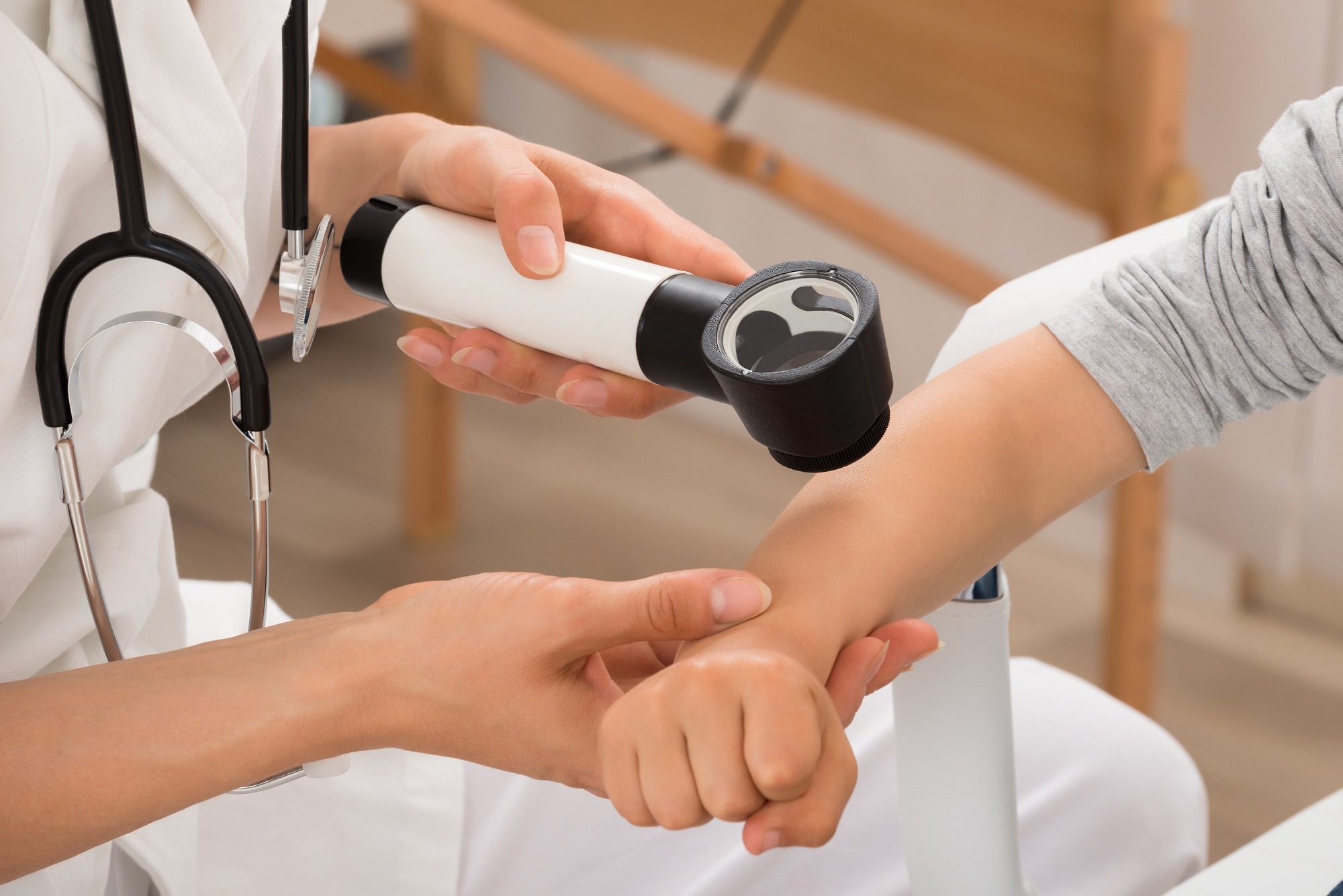A recent eBioMedicine study found key risk factors associated with the development of melanoma in children and adolescents.
 Study: UV-radiation and MC1R germline mutations are risk factors for the development of conventional and spitzoid melanomas in children and adolescents. Image Credit: Andrey_Popov/Shutterstock.com
Study: UV-radiation and MC1R germline mutations are risk factors for the development of conventional and spitzoid melanomas in children and adolescents. Image Credit: Andrey_Popov/Shutterstock.com
Background
Melanoma is a type of skin cancer mostly found in adults. Although it is a common type of malignant tumor in adults, sometimes melanoma is also found in children and adolescents.
The incidence rate of melanoma in children under 15 years of age is very low, i.e., 1.3 per million children; however, this rate increases exponentially with age. By 15-19 years, the incidence rate increases by 10-fold. This exponential increase in melanoma cases with age has been attributed to greater cumulative sunlight exposure.
The World Health Organization (WHO) has classified melanomas into three groups, i.e., conventional adult-type melanomas (CM), spitzoid melanomas (SM), and melanomas arising in congenital nevi (CNM).
Clinicians often face challenges in differentiating between SM and CM because both manifest features of benign lesions. It is also important to note that pediatric melanomas present different symptoms compared to their adult counterparts.
Genetic studies have revealed that CM shares a similar genetic profile to adult melanoma, particularly with regard to driver mutations that include PTEN, BRAF, CDKN2A deletions, kinase fusions, and UV exposures.
Data related to SM and CNM are sparse; however, a limited number of studies indicate the association of NTRK1, ROS1, and MET genes for the incidence of SM. In the case of pediatric melanomas, a sporadic presence of high-risk melanoma genes, such as CDK4 and CDKN2A, has been discovered.
Since the prevalence of melanoma in children and adolescents is rare compared to adults, not many studies are available linked to its biology, etiology, and tumor characteristics in the former groups.
About the study
The current study aimed to characterize pediatric melanoma and determine the somatic genetic alterations, which will help in the accurate diagnosis of SM and CM.
A total of 26 children and adolescents, who were less than 21 years of age and were diagnosed with pediatric melanoma, i.e., SM, CM, or other melanomas (OT), were included. All of them were registered at the biobank of the Polish Paediatric Rare Tumours Study Group (PPRTSG) at the Medical University of Gdansk, or the German Registry for Rare Paediatric Tumours (STEP-Registry). Skin samples of the patients were analyzed by dermatopathologists for histopathological diagnosis.
Study findings
Out of the 26 pediatric patients, 12 belonged to the SM group, 10 to the CM group, and 4 in the OT group. The median age of the participants was 12 years and the median follow-up was 3.3 years. It must be noted that the majority of the cohort was female, i.e., around 62%.
Around 50% of the patients had skin cancer in their extremities followed by head and neck. In the CM group, out of the three patients who presented metastatic disease, two died and one lived after a year of diagnosis.
The 5-year overall survival (OAS) analysis indicated that all patients in the SM group survived without the disease, whereas only 67% survived in the CM group.
This study revealed that the incidence of melanoma is associated with a chain of mutations. In the majority of cases, these mutations do not immediately appear after the first sunburns as a child, but years or decades later.
In rare cases, melanoma occurs in early years. This study identified a significant contribution of MC1R germline variants and exposure to UV radiation in the development of melanoma in children and adolescents.
A total of nine MC1R variants have been determined that indicate a higher risk of melanoma in individuals with limited risk phenotypes. A high rate of MC1R variants was detected in CM patients, i.e., 80% of this group of patients.
Consistent with the findings of previous studies, the R151C variant was significantly linked to pediatric melanoma. Furthermore, this study detected enrichments of V92M and R160W and rare variant D84E in the pediatric cohort of patients with melanoma.
The current study hypothesized that MC1R variants R160W, V92M, and R151C increased the risk of pediatric and adult melanoma, particularly in combination with UV exposure.
The genomic analysis exhibited a higher allele frequency (AF) for all three variants in pediatric compared to adult melanoma patients. Compared to a single MC1R variant, a combination of CDKN2A carriers with more than one MC1R variant exhibited a higher melanoma risk.
The current study also highlighted that UV-induced DNA damage leads to SM in the pediatric population. Both the groups exhibited similar genetic patterns with the common prevalence of BRAF and TERTp mutations and UV-induced DNA damage.
The SM subgroup was not linked with adult-type driver mutations except for two CTNNB1 hotspot variants, i.e., S37F, and S45F.
Conclusions
The current study indicated a higher impact of MC1R variants in early-onset CM in pediatric patients. However, large-scale genetic studies are required to confirm this observation.
Different melanoma subtypes can be distinguished based on the tumor-normal sequencing approach. This information could be used to design better preventive and treatment strategies.